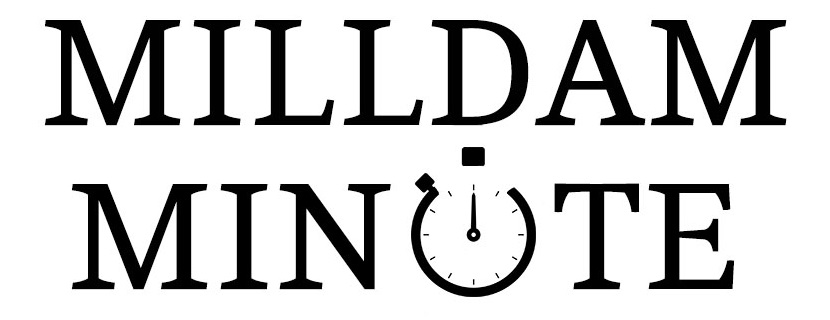When it comes to business development, our clients are no different from other companies that we come in contact with: everyone is always on the prowl for qualified leads. While there are many approaches one can take to drive new prospects, such as advertising, trade shows, and webinars, an often overlooked activity is the small, seminar-style type of event, or as we like to call them, “Micro Events.”
Micro Events are intimate gatherings, usually comprised of between 20 and 50 stakeholders and other industry influencers, such as analysts. The events are typically held during breakfast hours or the late afternoon and run 3 to 4 hours long. This timing allows attendees more flexibility, as it is often easier to avoid work conflicts at the beginning or end of the day (steering clear of a dinner event also helps keep costs down).
Another cost saving component to Micro Events is the use of a venue that you have complimentary access to. Since we do a lot of work in the data center space, we like to host events at colocation facilities or enterprise data centers. The venue is free and the enticement of a data center tour always helps drive interest and attendance. There are likely similar opportunities in your line of work as well.
[box type=”info” size=”large” style=”rounded”]Need more to visualize this kind of event? Click here to view some examples![/box]
Before deciding whether this is a good fit for your company, you should know what a Micro Event entails. Here are Milldam’s Six Strategies For Running A Successful Micro Event:
1) Partner with Complimentary Companies
With any event, if your prospective customers think that they are just going to be given a sales pitch and coffee, they’re not going to show. That’s why we recommend bringing on one or two partners that can provide educational presentations. This gives the event more credibility and provides a nice incentive to attend. Additionally, having those one or two extra companies on board can help defray the cost of the event, making the cost per lead that much lower. Even more important, each company should support attendance with their own contact and prospect lists, so you’re almost always assured a diverse array of new leads.
2) Create a Budget
Coming up with a budget for Micro Events is important. If you do not set a budget at the outset, this cost-effective outing could end up as a budget buster. Some things to think about when planning this type of event is: how much to spend on marketing, will there be a giveaway for attendees, and what type of food and drink will be served. If you’re unable to find a complimentary venue, you will also have to factor in the cost of a location.
3) Develop a Marketing Strategy
This is key to determining what the turnout of the event will be like and what type of end-users you can expect. One of the benefits of partnering with other companies is that it enables you to draw from a larger pool of potential attendees. From there, you need to determine: how many emails you will send out, the design of the email, whether or not you be issuing a press release(s), and if so, will you be putting it out on the wire. Equally important, will you be doing any additional promotion? In our experience, one of the more cost-effective pieces of promotion for Micro Events are LinkedIn ads.
4) Find a Third Party Master of Ceremonies
Bringing in a dynamic, third-party individual to help guide the conference will make things move smoothly and ensure that the event runs as close to schedule as possible. Additionally, this person can help engage the audience when it comes time for the Q&A. A good MC will liven up even the shyest audience which may seem minor, but is an important factor when end-users think about attending your future events. When selecting this host, it helps to use someone that has intimate knowledge of the industry that your company plays in.
5) Secure an End-User Keynote
One of the best ways to help drive traffic and garner high quality attendees is to have one of their peers serve as an industry keynote speaker. In the IT and mission critical industries, this could be a data center operator of a large colocation facility or the CIO of a well-known enterprise company. Many times, these individuals will be willing to speak at the events at no charge as they’re trying to communicate all the good work that their company is doing as well as build their personal brand.
6) Set an Agenda
Once you have a venue and companies lined up, it’s time to fill out the agenda. If you’re collaborating with other companies, we usually recommend allotting equal time for each entity so that they can make a presentation on an industry-specific topic based in thought leadership, never simply a sales pitch. Timing for breaks, an appropriate allotment for a keynote, and at least ten minutes for a Q&A should be incorporated as well.
Start Your Planning!
As you finalize next year’s marketing budget, consider taking advantage of the inherent value of the Micro Event. You’ll be amazed at the impact that these intimate events can have on your company’s credibility and quality of lead generation. Additionally, you’re getting several hours of face-time with high quality end-users for a fraction of the cost of a trade show, which is always a good thing. Just remember that a thoughtfully planned Micro Event from its outset is the key to success. The tips above will help you to get started, but the end result is limited only by your creativity.
Let’s start talking about your next Micro Event!

Adam Waitkunas authors the column “Anecdotally Adam” and is President of Milldam Public Relations.




